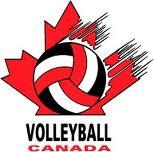
In municipalities across the United States, a quiet revolution is taking place, one dribble at a time. The symbol of this transformation isn’t some grandiose monument or a sweeping legislative change – it’s something more elemental yet incredibly powerful: a sport court. These vibrant, versatile spaces are reshaping the landscape of community interaction, public health, and urban engagement.
They offer a dynamic tapestry where the residents of a city or town can come together, moving from isolated urban pockets into vibrant social hubs.
Municipalities investing in sport courts are not just erecting structures of asphalt and acrylic; they are cultivating fields of dreams that encourage all citizens, from toddlers to seniors, to bond, compete, and simply play. A court isn’t just a basketball or tennis ground; it’s an investment in communal health, economic growth, and social cohesion. It’s a harbinger of a healthier, happier community and a brighter, more interconnected future.
The image of sport courts as mere venues for pickup games or structured competitions undersells their true potential. They function as the beating heart of communities, offering a compelling reason for neighbors to come together. Just like the town square of yesteryears, sport courts become the central congregation point where residents can meet, chat, and find common ground – whether that means cheering on a little league game or engaging in a friendly match of pickleball.
These hubs of energy transform the concept of idle socializing into active feats of camaraderie. The allure of a sport court is such that it doesn’t discriminate by age, ability, or background. It is an inclusive space, welcoming to anyone with a love for play and a desire to belong.
In an era where public health is a growing concern, the need for accessible, community-centered physical activity is acute. Sport courts address this need head-on. They provide an outlet for exercise and sport that is both convenient and inviting, helping to combat the root causes of sedentary lifestyles that lead to a host of health issues.
The impact on public health can be profound. A well-loved and well-used sport court is the vanguard of a community’s fight against obesity, inactivity-related diseases, and even mental health challenges. By serving as a physical conduit for leisure and sport, these courts enable residents to weave the thread of health and wellness into the fabric of their daily lives.
Sport courts are chameleons of recreation, adapting readily to the diverse interests of a community. Whether it’s a bustling game of basketball, a strategic match of tennis, or the up-and-coming sport of pickleball, these spaces cater to the varied passions of a populace. The health benefits extend not just from playing these sports but also from the social interaction and mental benefits they offer.
Sport is a universal language, and these courts are the public platforms where that language is broadcast, received, and translated into the joyous commotion of community play. By providing a multipurpose canvas for these social and physical activities, municipalities foster not just a love for the sport but a love for the community itself.
The addition of a sport court to a local park or community center is more than an aesthetic enhancement; it’s a tactical urban improvement. Such spaces can reinvigorate underused lots or add an exciting dimension to established parks. The presence of a sport court turns an area from static scenery into an active, bustling wing of the public landscape.
In addressing the needs of a municipality’s layout, sport courts also tackle challenges of public space distribution and utilization. They facilitate the effective use of land, transforming previously neglected parcels into cherished community spots. The result is an integrated and vibrant public realm that works for all citizens every day.
A fundamental aspect of any thriving community is the ability of its public spaces to foster inclusivity. Sport courts, by their very nature, are social levelers – places where camaraderie transcends social barriers. They enable interaction between individuals who might otherwise never cross paths, creating a sense of unity and shared purpose.
In an age where communities are yearning for connection, where diversity is celebrated, and social silos are broken down, sports courts offer a tangible solution. They encourage residents to forge new connections, strengthening the fabric of community life with the powerful bonds of shared experience and sport.
There’s a financial domino effect to the introduction of sport courts. The growth of local businesses, the influx of tourism, and the reduction in healthcare costs are just a few of the myriad economic benefits that can be traced back to these installations. Hosting local tournaments attracts visitors who, in turn, inject money into the local economy through dining, accommodations, and more.
Sport courts aren’t just cost centers; they are sources of revenue and growth. In a world where every dollar counts, these installations are investments with the potential for fantastic returns – not just financially but also in the form of a bustling, socially engaged community.
Choosing the right location for a sport court is a critical decision that shouldn’t be taken lightly. It should be easily accessible and ideally positioned within walking distance for a significant portion of the community to ensure the broadest possible utilization.
Accessibility goes beyond physical proximity; it involves the court’s integration into the surrounding environment, ensuring that infrastructure, lighting, and amenities are designed to make the space user-friendly for all. A well-thought-out, accessible sport court is a democratic space that truly engages the entire community.
The safety of court users is paramount, and this starts with quality construction and design. A thoughtfully constructed court with high-quality materials not only ensures the safety of those who use it but also guarantees the longevity of the investment.
Durability is an often overlooked but crucial aspect of court design. A court that withstands the test of time and use requires less frequent and less costly maintenance, ensuring that it remains a beloved fixture of the community for generations.
The success of a sport court hinges on how well it meets the needs and expectations of the community it serves. Engaging residents in the planning process ensures that the court is designed with their input and reflects their recreational culture.
This collaborative approach fosters ownership, pride, and a sense of community investment in the project. From the color of the court to the layout of the space, involving residents in the decision-making process creates a court that truly belongs to and reflects the community it serves.
We urge all municipal authorities and community leaders to consider the immense value a sport court could add to your community. Connect with the team at Sport Court of Pittsburgh, who are not only experts in court construction but passionate advocates for the power of community play. Engage in a discussion about how a custom-designed sport court could be the perfect addition to your public space.
Reach out to Sport Court of Pittsburgh today, and together, we can turn your municipality into a beacon of community interaction and health. Be part of the change – invest in the futures of those who call your townhome. The benefits are not just for the present but for the generations yet to come. Time to transform your community – one court at a time.


